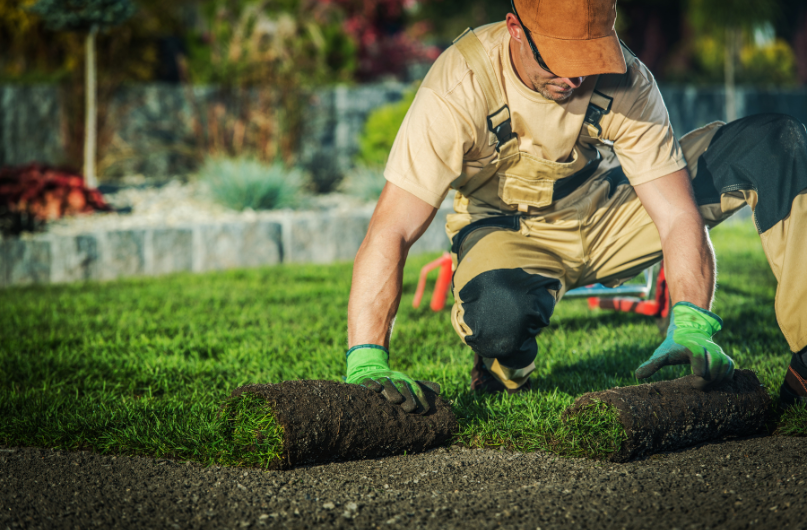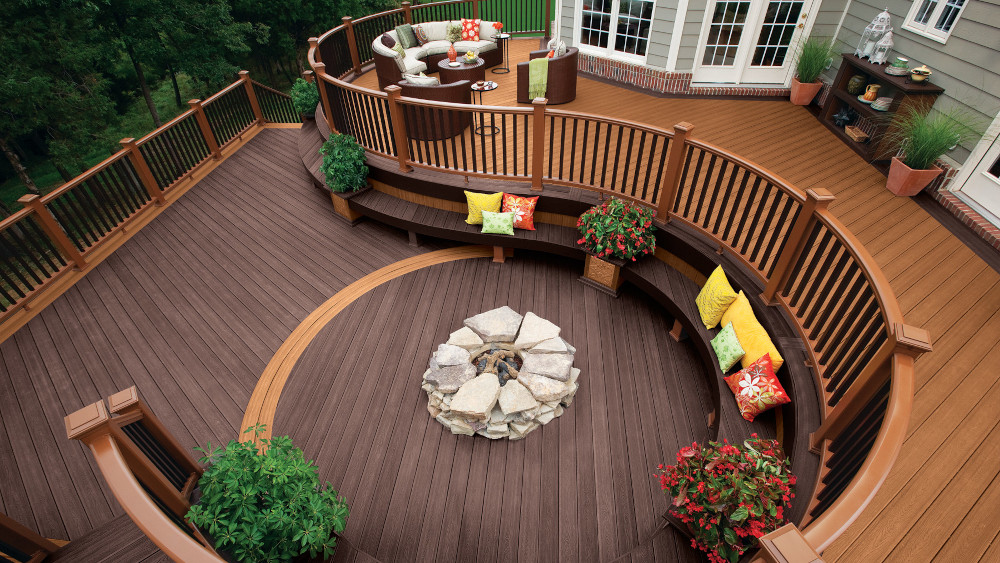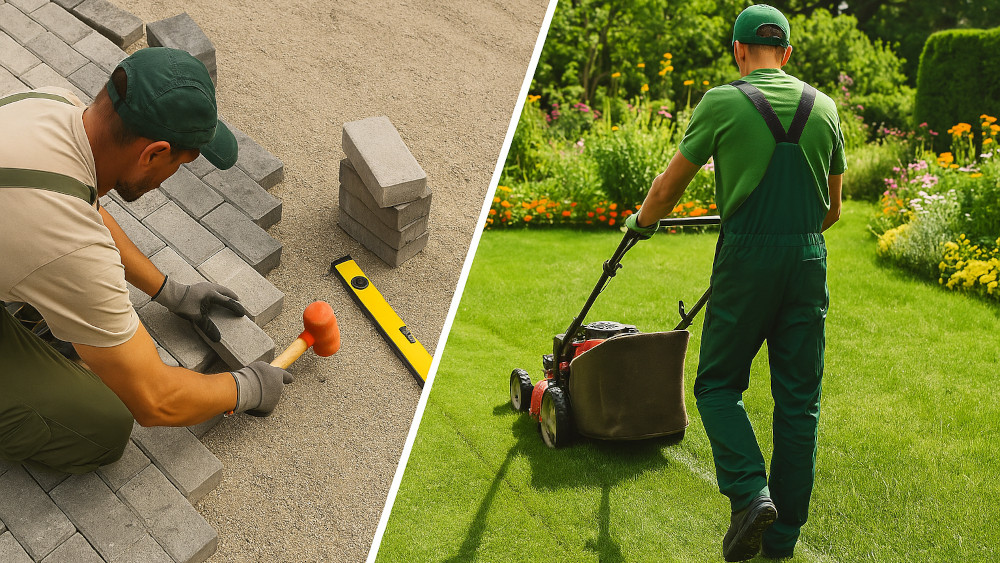A landscaper designs, constructs, and maintains outdoor spaces to enhance both their aesthetic appeal and functionality. They combine plants, trees, shrubs, flowers, and hardscape features to craft visually appealing landscapes. Beyond beautifying spaces, landscapers tackle challenges like plant health, pest control, and weather unpredictability, often incorporating sustainable practices. Their role demands a blend of creativity and technical skills. But what specific responsibilities do they shoulder daily, and why is hiring a professional landscaper so essential? There’s more to their job than meets the eye.
Main Points
- Designs and plans outdoor spaces, considering aesthetics, soil quality, sunlight, and water drainage.
- Prepares the ground by clearing debris, assessing soil, grading land, and installing drainage systems.
- Selects and arranges plants, trees, and shrubs for visual appeal and functionality.
- Performs maintenance tasks such as mowing, trimming, fertilizing, and managing pests and diseases.
- Utilizes sustainable practices and eco-friendly materials to create environmentally responsible landscapes.
What is Landscaping?
Landscaping involves designing, constructing, and maintaining outdoor spaces such as gardens, parks, and yards. It encompasses working with plants, trees, shrubs, flowers, and hardscape elements like pathways and structures. One of the primary landscaping benefits is the improvement of outdoor aesthetics, which can boost property value and provide enjoyable spaces for relaxation and recreation.
Landscaping trends continually evolve, with current preferences leaning towards sustainable practices, native plants, and eco-friendly materials. Incorporating smart irrigation systems and outdoor lighting solutions are also popular trends aimed at enhancing both functionality and energy efficiency.
However, landscaping challenges are ever-present. Managing plant health requires a deep understanding of horticulture, soil conditions, and climate factors. Pests, diseases, and unpredictable weather can pose significant hurdles. Landscapers must also navigate logistical issues, such as the proper installation of irrigation systems and ensuring timely maintenance tasks like mowing, trimming, and fertilizing.
Successful landscaping demands a blend of creativity, technical skill, and problem-solving abilities. By keeping abreast of the latest trends and overcoming challenges, landscapers can create and maintain stunning outdoor environments that offer numerous benefits to property owners.
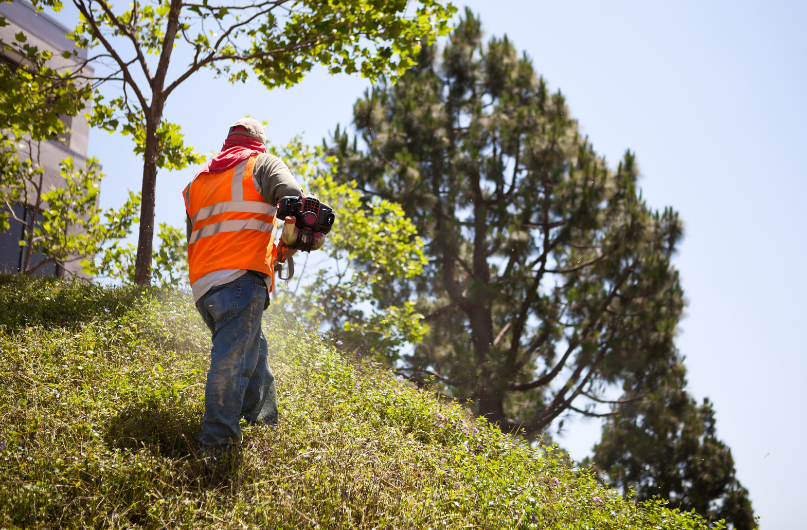
Key Responsibilities of a Landscaper
A landscaper’s key responsibilities encompass a wide range of tasks that guarantee outdoor spaces are both beautiful and functional.
They start with design and planning, followed by ground preparation, which includes soil cultivation and grading.
Plant selection and installation, hardscaping, and ongoing lawn care and maintenance are crucial parts of their role, requiring consistent attention to detail and expertise.
Design and Planning
Designing and planning outdoor spaces involves selecting and arranging plants, trees, and features to create visually appealing and functional environments. A landscaper must balance outdoor aesthetics with functional layouts to make sure the space is both beautiful and practical. They achieve this by collaborating closely with clients, understanding their preferences, and incorporating those desires into the final design.
A well-thought-out landscape design considers several critical factors:
- Soil Quality: Understanding the soil type is crucial for choosing the right plants that will thrive.
- Sunlight Exposure: Landscapers assess how much sunlight different areas receive to place plants accordingly.
- Water Drainage: Proper drainage planning prevents waterlogging and promotes healthy plant growth.
Landscapers often use advanced landscaping software to visualize designs and create detailed plans. This technology aids in adjusting layouts, trying different plant combinations, and ensuring all elements fit harmoniously. The ability to present these visualizations helps in gaining client approval and making necessary adjustments before implementation.
Client collaboration is key, as it ensures that the landscaper’s vision aligns with the client’s expectations. Effective communication and a deep understanding of client needs lead to a successful and satisfying landscape design project.
Ground Preparation
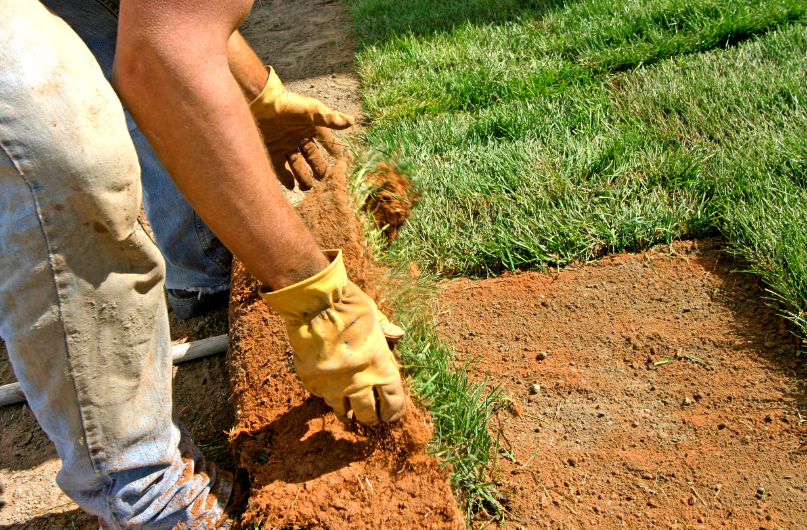
Preparing the ground effectively is crucial for landscapers to guarantee the success of any landscaping project. The first step involves soil preparation, which includes clearing debris, rocks, and weeds to create a clean slate. Landscapers then assess the soil quality, texture, and composition, making necessary soil amendments to improve fertility and promote healthy plant growth.
Ground leveling is another crucial aspect. Landscapers use grading techniques to make sure the land is even and stable, creating a strong landscaping foundation. This process may involve creating slopes, terraces, or other topographical features for both aesthetic appeal and functional purposes.
Proper drainage solutions are important to prevent waterlogging and erosion. Landscapers might install drainage systems, such as French drains or swales, to direct water away from critical areas. Additionally, they may lay down landscape fabric and add mulch to help maintain soil moisture and suppress weed growth.
Plant Selection and Installation
Landscapers carefully select a variety of plants and install them according to the design plan to create visually appealing and functional outdoor spaces. The process of plant selection is a critical aspect of landscape design, requiring knowledge of plant species, climate conditions, and aesthetic principles.
First, they evaluate the soil preparation, ensuring it meets the requirements of the chosen plants. This involves testing soil pH, amending with organic matter, and ensuring proper drainage.
Once the soil is ready, landscapers proceed with the installation. They follow a systematic approach that includes:
- Positioning Plants: Arranging plants according to the design plan to maximize visual impact and functionality.
- Spacing and Depth: Ensuring each plant is spaced correctly and planted at the proper depth to promote healthy growth.
- Watering and Mulching: Immediately watering newly installed plants and applying mulch to retain moisture and suppress weeds.
Hardscaping
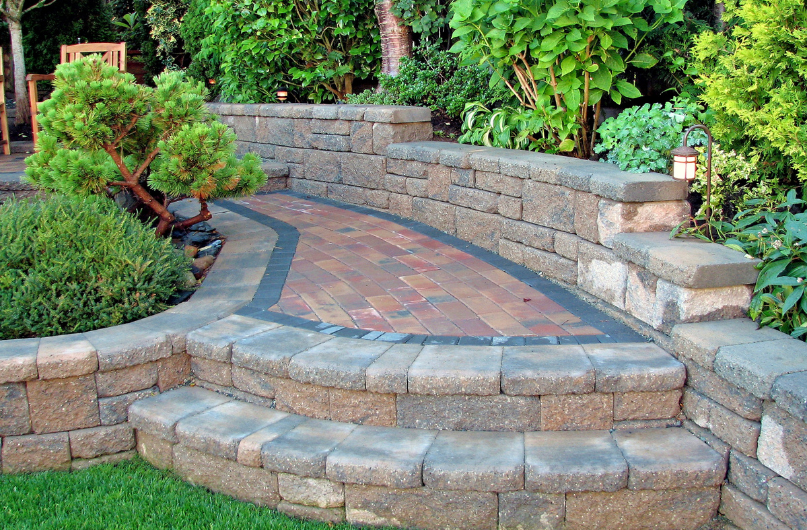
Apart from softscape tasks, landscapers also take on hardscaping responsibilities to create durable and visually striking outdoor structures. Hardscaping involves designing and installing non-living elements like patios, walkways, and retaining walls. Landscapers use hardscaping materials such as stone, concrete, brick, and wood to construct these features, making sure they complement the overall landscape design.
A key difference between hardscaping vs. softscaping lies in the materials and techniques used. While softscaping focuses on living elements like plants and flowers, hardscaping provides the structural backbone that adds organization and definition to outdoor spaces. Landscapers skilled in hardscaping balance these elements to create cohesive and functional designs.
In addition to professional projects, many homeowners explore DIY hardscaping projects. These can range from simple stone pathways to more complex patios or garden walls. However, the expertise of a professional landscaper can guarantee that these projects are completed efficiently and to a high standard.
Design trends in hardscaping often emphasize natural materials and sustainable practices, making it crucial for landscapers to stay updated on the latest techniques and materials. This knowledge allows them to create outdoor spaces that aren’t only beautiful but also environmentally friendly and durable.
Lawn Care and Maintenance
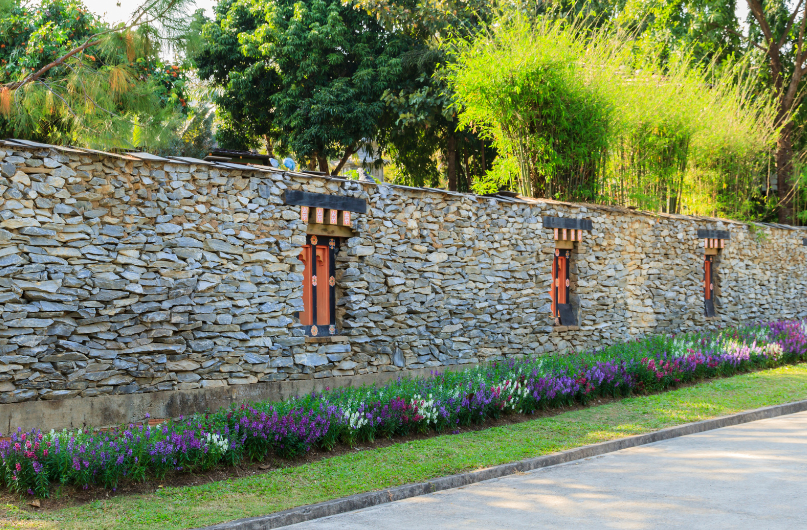
While hardscaping focuses on creating robust structures, effective lawn care and maintenance are important for ensuring the overall health and appeal of the landscape. Landscapers engage in various tasks to maintain vibrant and lush lawns. Regular lawn fertilization is necessary for providing the necessary nutrients that promote healthy grass growth.
Seasonal pruning keeps shrubs, trees, and hedges in excellent shape, preventing overgrowth and encouraging new growth.
Weed control is another critical aspect of lawn care, ensuring that invasive plants don’t compete with desired vegetation for nutrients and sunlight.
Lawn aeration, which involves perforating the soil to allow air, water, and nutrients to penetrate the grass roots, is key to maintaining a healthy lawn.
Here are three core practices landscapers follow for excellent lawn care:
- Lawn Fertilization: Ensuring grass receives essential nutrients for robust growth.
- Weed Control and Lawn Aeration: Preventing weeds from overtaking the lawn and aiding nutrient absorption.
- Edging Techniques and Pest Management: Creating clean boundaries and addressing pest issues to maintain a pristine lawn.
Additionally, landscapers use precise edging techniques to define lawn boundaries and employ pest management strategies to protect against harmful insects. These efforts collectively contribute to a well-maintained and aesthetically pleasing landscape.
Specialized Landscaping Services
Specialized landscaping services go beyond the basics to address unique needs and preferences. Garden restoration and makeovers can transform neglected spaces into vibrant, functional areas.
Additionally, sustainable and eco-friendly landscaping practices help preserve resources, while commercial landscaping guarantees that business properties maintain a professional appearance.
Garden Restoration and Makeovers
Transforming a neglected garden into a vibrant oasis, landscapers breathe new life into outdoor spaces through garden restoration and makeovers. Garden rejuvenation involves implementing creative solutions to restore beauty and functionality. Through transformative landscaping and innovative designs, these professionals tackle the project with precision and expertise.
Restoring a garden often begins with a thorough assessment of the existing landscape. Landscapers then create a plan that includes:
- Redesigning layouts: Adjusting the garden’s structure to improve flow and aesthetic appeal.
- Selecting new plants: Choosing species that thrive in the local climate and elevate the garden’s overall look.
- Improving existing features: Upgrading elements like paths, borders, and water features to complement the new design.
Reviving outdoor spaces requires expert techniques, including soil conditioning, pruning, and strategic planting. Landscapers focus on sustainable practices to guarantee the garden’s longevity. They also address any underlying issues, such as drainage problems or soil degradation, to avoid future complications.
Sustainable and Eco-friendly Landscaping
Additionally, landscapers are increasingly focusing on sustainable and eco-friendly landscaping practices to create environmentally responsible outdoor spaces. The benefits of sustainable landscaping are manifold, including reduced water usage, minimized chemical inputs, and improved biodiversity. By opting for native plants, landscapers guarantee that the flora is well-adapted to local conditions, reducing the need for excessive watering and chemical fertilizers. This practice not only conserves water but also boosts the resilience of the ecosystem.
Conservation through eco-friendly practices is another critical aspect of sustainable landscaping. Techniques such as rainwater harvesting and composting contribute to resource conservation and waste reduction. Rainwater harvesting systems collect and store rainwater for irrigation purposes, minimizing reliance on municipal water supplies. Composting organic waste enriches the soil naturally, eliminating the need for synthetic fertilizers.
The impact of landscaping on biodiversity can’t be overstated. Eco-conscious landscapers design landscapes that support a variety of plant and animal species, creating habitats that promote biodiversity. By incorporating elements like pollinator gardens and habitat restoration projects, landscapers can significantly improve local ecosystems. These sustainable and eco-friendly practices not only beautify spaces but also foster long-term ecological balance.
Commercial Landscaping
In the world of commercial landscaping, professionals offer customized services to improve the outdoor spaces of businesses, parks, schools, and government properties. These services include landscape design, installation, maintenance, and irrigation systems tailored to meet the specific needs of commercial clients. Commercial landscapers focus on creating welcoming and professional environments that align with the client’s vision and budget.
Commercial landscaping trends often revolve around sustainability, aesthetic appeal, and efficiency. By staying updated with these trends, landscapers make sure that their designs are both modern and functional. Landscaping for corporate spaces often includes features like well-manicured lawns, strategic plantings, and sophisticated irrigation systems to maintain a pristine look throughout the year.
The benefits of professional commercial landscaping are numerous:
- Enhanced Curb Appeal: A professionally landscaped property immediately looks more inviting and well-maintained.
- Increased Property Value: Quality landscaping can significantly elevate the market value of commercial properties.
- Employee and Client Satisfaction: A pleasant outdoor environment can improve the overall experience for employees and clients, fostering a positive impression.
Tools and Equipment Used by Landscapers
Landscapers rely on a variety of tools and equipment, including tractors, mowers, leaf blowers, and aerators, to maintain and beautify outdoor spaces. Key hand tools like shovels, rakes, pruners, and hedge trimmers are also vital for planting and grooming gardens.
To guarantee the longevity and performance of their equipment, landscapers prioritize regular equipment maintenance and adhere to strict safety precautions. This includes wearing gloves, goggles, helmets, and steel-toed boots when operating any machinery or tools.
Innovative landscaping technology has greatly improved the efficiency and precision of landscaping tasks. Modern advancements like GPS-guided mowers and automated irrigation systems allow landscapers to deliver high-quality results with less manual effort. These technologies not only boost productivity but also ensure that landscapes are maintained with excellent care and precision.
Efficient tool storage solutions are equally important, as they help landscapers keep their tools organized and easily accessible. Proper storage reduces the risk of damage and prolongs the life of the equipment. By integrating well-organized storage systems, landscapers can quickly locate and deploy the necessary tools, ensuring that every project runs smoothly and efficiently.
The Importance of Hiring a Professional Landscaper
Hiring a professional landscaper brings a wealth of expertise and skill to the design, installation, and maintenance of outdoor spaces. Their knowledge can transform any garden into a visually appealing and functional area, enriching both the aesthetics and value of the property.
One of the key benefits is the cost effectiveness they provide by avoiding common DIY mistakes, which can be expensive to rectify.
Professional landscapers possess expertise and creativity, vital for creating a unique and harmonious outdoor environment. They understand plant care, irrigation systems, and design principles, ensuring that all elements work together seamlessly. Their ability to innovate and adapt designs to suit specific needs sets them apart from amateur efforts.
Another significant advantage is the increase in property value. A well-maintained landscape not only boosts curb appeal but also makes the property more attractive to potential buyers.
Here are three key aspects to contemplate:
- Specialized Knowledge and Innovative Ideas: Professional landscapers bring specialized knowledge and innovative design ideas.
- Cost Efficiency: They prevent costly mistakes and maximize resource use.
- Property Value and Aesthetics: A professionally landscaped yard enriches both visual appeal and market value.
How to Choose the Right Landscaper in New Zealand
Selecting the right landscaper in New Zealand involves evaluating their experience, skills, and ability to meet the physical demands of the job.
To begin with, prioritizing landscaper qualifications is important. Look for a minimum of five years of experience in both residential and public projects. This guarantees a well-rounded understanding of various landscaping requirements and challenges.
Next, consider the landscaper skills necessary for effective execution. They should be skilled at using equipment like tractors, mowers, leaf blowers, and aerators. Additionally, proficiency in planting, mowing, trimming, pruning, weeding, and watering is crucial. Assess their ability to install outdoor lighting and sprinkler systems, which can improve the aesthetic appeal and functionality of your space.
During the landscaper selection process, it’s crucial to evaluate their physical capabilities. Ensure they can handle tasks that involve lifting 50 pounds, bending, standing, and climbing.
Finally, reliable communication and teamwork skills, combined with the ability to work independently, are indispensable. Verify that the landscaper holds a valid driver’s license, which indicates their readiness to travel to various job sites.
Frequently Asked Questions
What Is the Purpose of Landscaping?
The purpose of landscaping is to increase a property’s value, improve its aesthetic appeal, and minimize environmental impact. By thoughtfully designing and maintaining outdoor spaces, landscapers create beautiful, functional environments that benefit both homeowners and nature.
What’s Your Greatest Skill as a Landscaper?
Their greatest skill as a landscaper is design creativity. They excel in plant selection, ensuring soil health, and creating visually stunning landscapes. Their innovative designs transform spaces, making them functional and aesthetically pleasing for clients.
What types of tools and equipment do landscapers commonly use?
Landscapers commonly use tractors, mowers, leaf blowers, aerators, shovels, rakes, pruners, and hedge trimmers. Regular maintenance and safety measures are essential for these tools.
Why is hiring a professional landscaper more cost-effective than doing it yourself?
Professional landscapers prevent costly mistakes, maximize resource use, and provide specialized knowledge and innovative design ideas, which can increase property value and aesthetics.
What safety precautions should landscapers take when operating machinery and tools?
Landscapers should wear protective gear like gloves, goggles, helmets, and steel-toed boots, and follow equipment-specific safety guidelines to prevent accidents and injuries.
Conclusion
In summary, landscapers play a vital role in shaping and maintaining outdoor spaces, blending creativity with technical expertise. They handle everything from plant selection and pest control to hardscape installation and sustainable practices.
By hiring a professional landscaper, homeowners and businesses can guarantee their landscapes are both beautiful and functional.
When selecting a landscaper in New Zealand, it’s important to take into account experience, services offered, and clie
